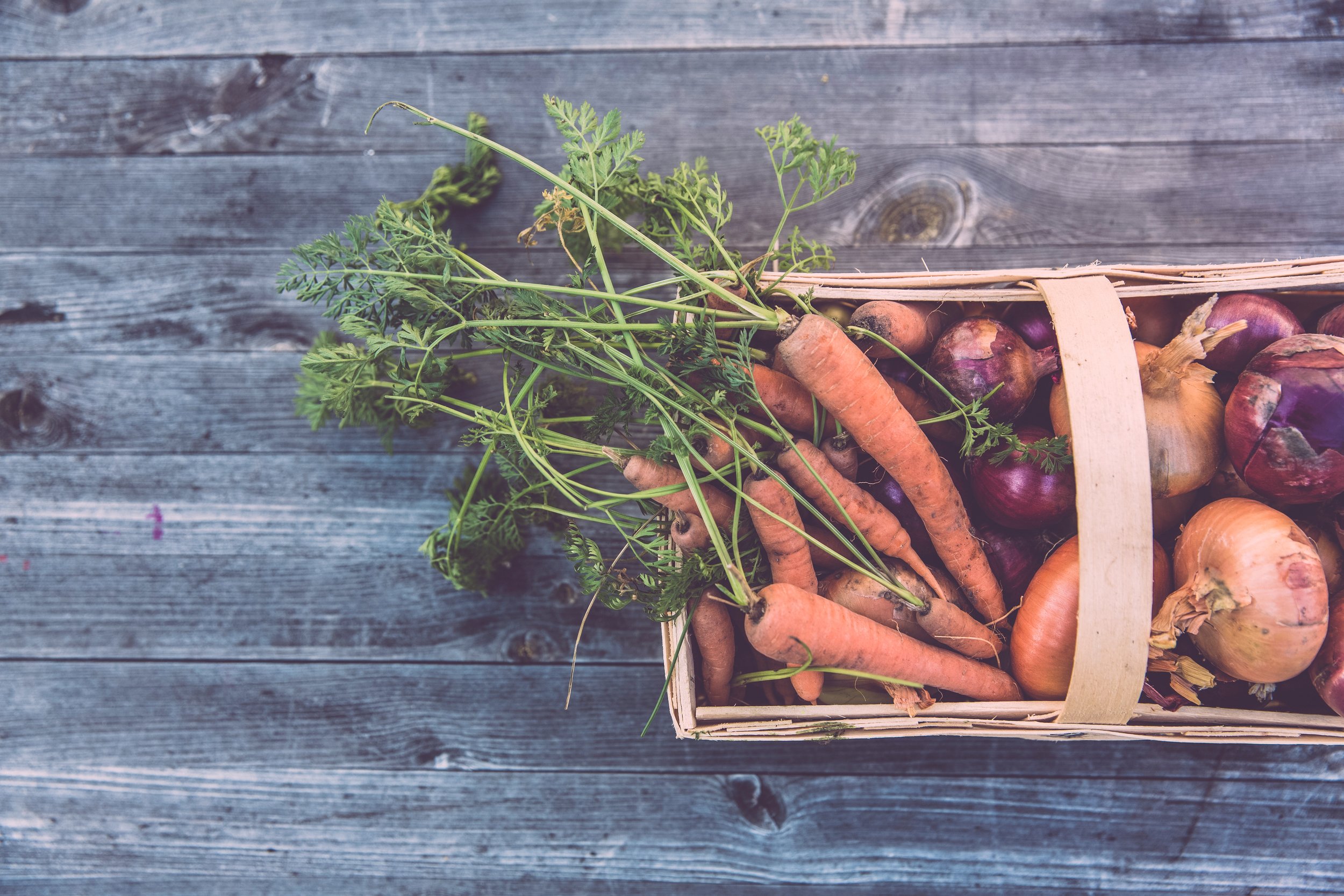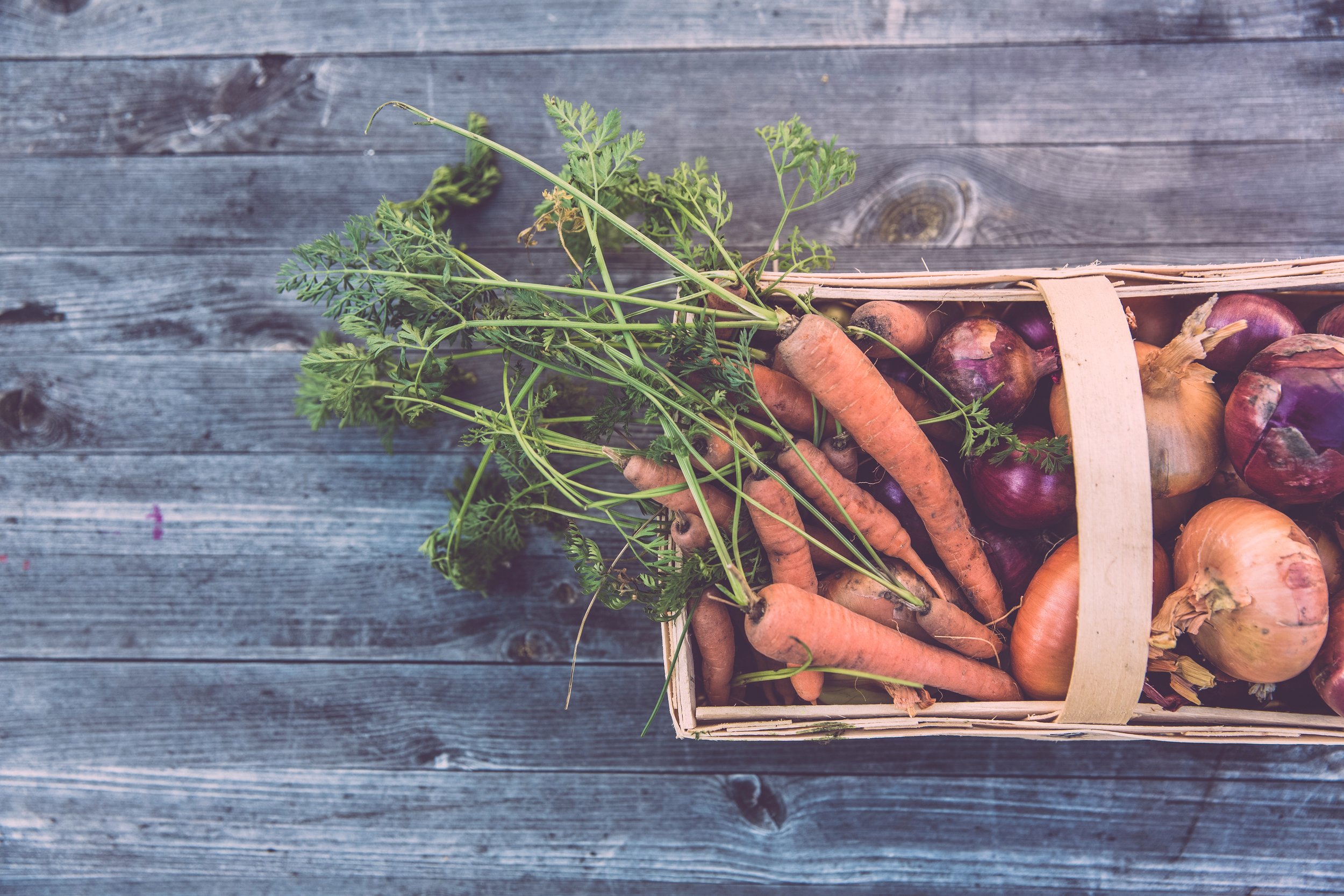
Do you eat enough vegetables each day?
What exactly is enough anyway?
The USDA recommends 3-5 servings each day. However, many dietitians would argue this is just a minimum and for optimal health, we should be getting more.
This isn’t a big problem for me in the summer when zucchini takes over my garden and crisp snap peas are just a few steps away. Fall is another story. With holidays quickly approaching the only vegetables we may see for a while are pumpkin and sweet potato. And only then covered with a sugary topping.
However, the fall may be the most important time of the year to pile your plate full of vegetables. They supply the powerful nutrients our body needs to ward off illness and combat the stress of the holiday season.
So, here are my tips on eating and preparing more vegetables this fall (even if your family doesn’t like them).
1. Make a meal out of a salad
The easiest way for me to double or triple my daily vegetable intake is with a large salad for lunch or dinner. I’m not talking a boring iceberg salad either. Try baby spinach and romaine for more flavor, or arugula for peppery spice If you prefer a milder taste, go for butter head varieties or endive. After your greens, you can pile your salad bowl high with carrots, cucumber, tomatoes, peppers, or any other veggies in your fridge.
2. Don’t underestimate good seasoning
You don’t have to eat vegetables plain, especially if they aren’t on your list of favorite foods. Use dips, sauces, and dressings to add some fun. My favorites are made with avocado mayonnaise to add a dose of healthy fats. When cooking veggies, add herbs, garlic, onion, ginger, or a little chicken broth to add depth and variety to your meals.
3. Add some vegetables to your breakfast
Do you like eggs for breakfast? Add some diced vegetables to your scramble or omelet. Throw in tomatoes, onion, peppers, squash, or top with avocado. If you don’t have time for a hot breakfast, blend some kale or spinach into a morning smoothie. If you start your day with a serving of vegetables I bet you find yourself eating more servings throughout the day as well. I am short on time most days, so I use a Organic Vegan Protein Shake that includes 2 servings of Fruits/Vegetables.
4. Roast fall vegetables to bring out their sweetness
I like to roast a pan of fall vegetables on a sheet pan at the beginning of each week. I spread them out evenly in a single layer, drizzle with some olive oil and bake. You will know roasted vegetables are done when they can be easily pierced with a fork and slightly brown around the edges. Roasting vegetables that are naturally sweet like butternut squash brings out even more of the sweetness. When you roast more bitter vegetables like brussel sprouts, they become milder in flavor.
5. Lightly steam or saute vegetables.
No one likes green beans when they are cooked to a mush. Use a steamer or lightly saute vegetables so they remain bright, crisp, and flavorful. The favorite steamed vegetables at our dinner table are green beans, asparagus, and broccoli. They are an excellent side dish for meat, or once chilled they are also convenient add-ins for salad or great for dipping.
6. Sneak vegetables in the unexpected
If your family doesn’t like to eat their veggies, you can sneak them into many casseroles, soups, or side dishes. Add minced vegetables to your favorite chili, stew, or tomato sauce recipe to up the nutrient content. My current favorite veggie to disguise is cauliflower. When pureed, it is easy to use as a dairy-free thickener or mixed with potatoes for a healthier mash.
7. Use frozen vegetables
Fresh produce is always best, but that can be hard in the mid-south during these colder months. When it comes to convenience and staying on a budget, frozen is your next best option. Since frozen vegetables are picked and flash frozen at their peak ripeness, their nutrient content is preserved. They are perfect when time is an issue because they don’t need to be washed or prepped. Just steam or simmer for a few minutes on their own or add to soups and stews during the last minutes of cooking.
As you add more vegetables to your diet, start with the veggies you and your family already like. Try working more of them into your meal rotation by sneaking them into breakfast, packing them raw for lunch, and roast a pan for your evening meal.
Although whole food nutrition is always best, when your family struggles to get all the nutrients you need, there are greens powders and quality supplements that can help support your goals. For more information about how to fill in your nutritional gaps CLICK the link below.




